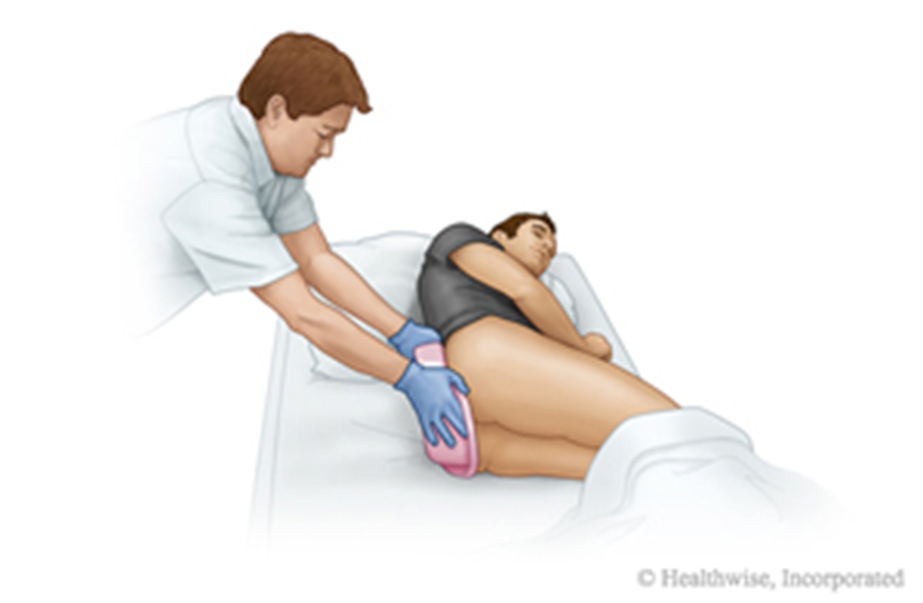The nurse observes an unlicensed assistive personnel (UAP) washing hands prior to entering the client's room. Which action by the UAP requires additional teaching?
Washing for a total of 20 seconds.
Turning the water off using bare hands.
Holding hands below elbows when rinsing.
Lathering using a circular movement.
The Correct Answer is B
Choice A reason: Washing hands for a total of 20 seconds is recommended by the CDC as part of proper hand hygiene to prevent the spread of germs.
Choice B reason: Turning the water off using bare hands after washing can re-contaminate the hands. The CDC recommends using a paper towel to turn off the tap to avoid re-contamination.
Choice C reason: Keeping hands below elbows when rinsing is the correct procedure to prevent water from running down the arms onto the cleaned hands.
Choice D reason: Lathering using a circular movement is a recommended technique to ensure all surfaces of the hands are cleaned thoroughly.
Nursing Test Bank
Naxlex Comprehensive Predictor Exams
Related Questions
Correct Answer is C
Explanation
Choice A reason: Suggesting that delirium is often a sign of underlying mental illness and that institutionalization is necessary can be distressing and may not be accurate without further assessment.
Choice B reason: Stating that dementia due to Alzheimer's disease is often reversible even in the late stages is incorrect; Alzheimer's disease is a progressive condition with no current cure.
Choice C reason: Recognizing the possibility of delirium due to depression, which can be reversible, is a hopeful and constructive approach that encourages further evaluation and treatment options.
Choice D reason: Suggesting that symptoms of dementia are permanent because of age can be disheartening and does not consider the potential for reversible causes of cognitive impairment.
Correct Answer is A
Explanation
Choice A reason: Pouring warm water over the perineal area can stimulate the micturition reflex, which may help the client void. It is a non-invasive, first-line intervention to promote natural voiding in clients with urinary incontinence. The nurse should evaluate its effectiveness as it can be a simple yet effective method to assist the client.
Choice B reason: While recommending a complete bath may help maintain hygiene, it does not directly address the immediate need to stimulate voiding. The nurse's priority is to manage the incontinence issue effectively and a bath can be considered after addressing the client's immediate needs.
Choice C reason: Suggesting catheter insertion may be premature without first attempting less invasive measures. Catheterization carries risks such as infection and should be considered only when other interventions are ineffective or not feasible.
Choice D reason: There is no evidence to suggest that pouring warm water over the perineal area promotes infection in elderly females. In fact, proper perineal care is essential in preventing infections, especially in clients with incontinence.

Whether you are a student looking to ace your exams or a practicing nurse seeking to enhance your expertise , our nursing education contents will empower you with the confidence and competence to make a difference in the lives of patients and become a respected leader in the healthcare field.
Visit Naxlex, invest in your future and unlock endless possibilities with our unparalleled nursing education contents today
Report Wrong Answer on the Current Question
Do you disagree with the answer? If yes, what is your expected answer? Explain.
Kindly be descriptive with the issue you are facing.
